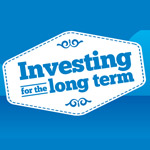Investing for the Long Term
 Whether you’re an experienced investor or a novice dipping their toe in the water, there are some essentials to remember. This article will introduce some of the concepts you need to help you navigate the investment waters.
Whether you’re an experienced investor or a novice dipping their toe in the water, there are some essentials to remember. This article will introduce some of the concepts you need to help you navigate the investment waters.
Investing over the long term can help you weather market fluctuation and make the most of compound returns.
It’s never too early to start investing. Whether the amount is small or large, the earlier you invest, the more likely you are of achieving a greater end result.
Market cycles
Investment markets tend to move in cycles. They can vary from providing strong returns year after year, known as bull markets, to bear markets where stock markets are declining.
It’s important to recognise that investing is generally for the medium (3-5 years) to long-term (5+ years) and understand there will be periods of both out performance and underperformance. Those with shorter time horizons and lower acceptance of risk often opt for more defensive asset types that are less prone to market movement, such as cash and fixed interest.
While defensive assets may provide greater shelter from volatility, they generally provide lower longer term returns than the other asset classes such as property and shares. This may result in you not achieving all of your financial goals and objectives.
Time in the market
It can be tempting to react to market volatility by jumping in and out of certain investments. But timing the market requires you to make two correct decisions that are very difficult to make: exactly when to buy and exactly when to sell. Being out of the market at the wrong time, even if it’s for a short period can significantly reduce the overall performance of your investments.
Markets will always fluctuate but the longer you stay invested, the less affected you are by short-term volatility.
The power of compound returns
The power of compounding returns is the single most important reason for you to invest early. The interest your account earns on your original investment increases your account balance and ongoing investment earnings can be made on both your original investment and the interest your account has returned. In other words, you receive interest on interest. When your assets compound for a long period of time, this can give a substantial boost to your investment.
Asset performance over the long term
For example, if you decide today to invest an initial amount of $1,000 into a managed fund that earns 8% p. a. and then contribute $100 per month, in 10 years’ time, you would have $20,071. If you started investing the same amount three years later, you would only have $12,708. This is where the power of compound returns takes effect. Spending more time in the market, or investing earlier, can make a big difference to your overall investment returns.
Benefits of dollar cost averaging
Dollar cost averaging (DCA) is a strategy of investing a fixed amount at regular intervals. DCA lowers the risk of investing a large amount into a single investment at the wrong time. The benefit of DCA is that the timing risk is reduced and as a result the cost is averaged out over time.
Within managed funds, for example, unit prices can fluctuate in response to market movements. By making regular investments rather than a one-off contribution, the unit price evens out over time.
When followed strictly, this strategy can help you reduce risk and avoid costly emotional and spontaneous investment decisions that might see you selling at the bottom of the market and buying in at the top.
Source I One Path



